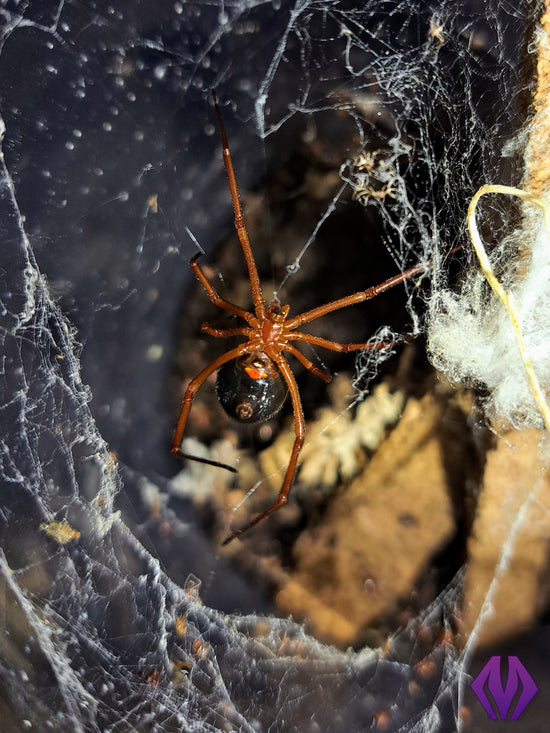Latrodectus spp. care guide
NOTE: for the purposes of this guide, we will be focusing mostly on North American Latrodectus species.
_____________________________________________________
description
Latrodectus is a widely-spread genus of cobweb spiders (Family Theridiidae) known worldwide as "widow spiders". The first species in this genus was described as early as 1775 . Widows are famous for their large globular abdomens with the red hourglass marking, and long, skinny (creepy?) legs. The nickname "widow" comes from the female spiders' propensity to eat males during or after breeding, however this occurrence isn't actually all that common (source).
-

adult L. mactans (southern black widow) from iNaturalist
-

adult L. bishopi, the red widow
-

L. bishopi spiderlings
natural history
Latrodectus is widely distributed throughout all continents except Antarctica. Most common North American widows in the arachnid hobby are hardy spiders that prefer to hide in dark, undisturbed places where they wait to ambush insects that brush past their tripwire-like webs. One exception to this generalization is L. bishopi, the red widow. Endemic to the dry forests of Florida, this species is usually found living among sand pine habitat and specifically on palmetto shrubs. This habitat itself is considered at risk of extinction due to development, making L. bishopi threatened with extinction as well (source). Most NA Latrodectus are tolerant of a range of temperatures and humidity levels, although many are native to warmer climates.
enclosure design
widows are mostly sit-and-wait ambush predators, and as such, theu don't require much space to thrive. A 32oz deli container or an enclosure approximately 4x4x7" will suit most adult widows. Be sure to provide some physical material to fill the negative space in the enclosure for web anchors, such as sticks, large dead leaves, aspen wood fibers, etc. Substrate is mostly up to the keeper, as the spiders rarely if ever touch the ground, but it can be used as a humidity bank. We use slightly damp sphagnum moss for most of our adult widows. Spiderlings fare just fine bare-bottom.
-

purplebox 4x4x7 hex acrylic enclosure with an adult female L. bishopi
-

purplebox 4x4x7 hex acrylic enclosure with an adult female L. bishopi
-

young female L. mactans in a 4oz deli container with aspen wood fibers
maintenance
Feeding widow spiders is very simple - they are easily capable of taking down prey even larger than their body size due to the stickyness of their webbing and the potency of their venom. We allow our widows to hunt live prey - spiderlings get melanogaster or hydei fruit flies (multiple per feeding, about 2-3 feedings per week depending on abdomen size); juveniles and adults can handle 1/2" crickets and usually stay full much longer than spiderlings. Like most arachnids, widows are capable of thermoregulation and should be provided with a small thermal gradient. This can be achieved by placing the enclosure under an LED grow light that provides just a few extra degrees of warmth above room temperature. It is important to ensure this ambient temp doesn't exceed temps that these species experience in the wild, which would be in excess of about 80-82F. These spiders get a lot of their dietary moisture from their diet, but they may also drink physical droplets from the occasional gentle misting. Avoid saturating the enclosure. Widows are messy spiders, leaving remains of prey around their enclosure. You can pick these out with tongs for spot cleaning without destroying much webbing or disturbing the spider too much. With all the above being said, widows are fairly hardy animals once they pass the second or third instar (about 1/8" legspan) - there is no need to fret over minor details.






